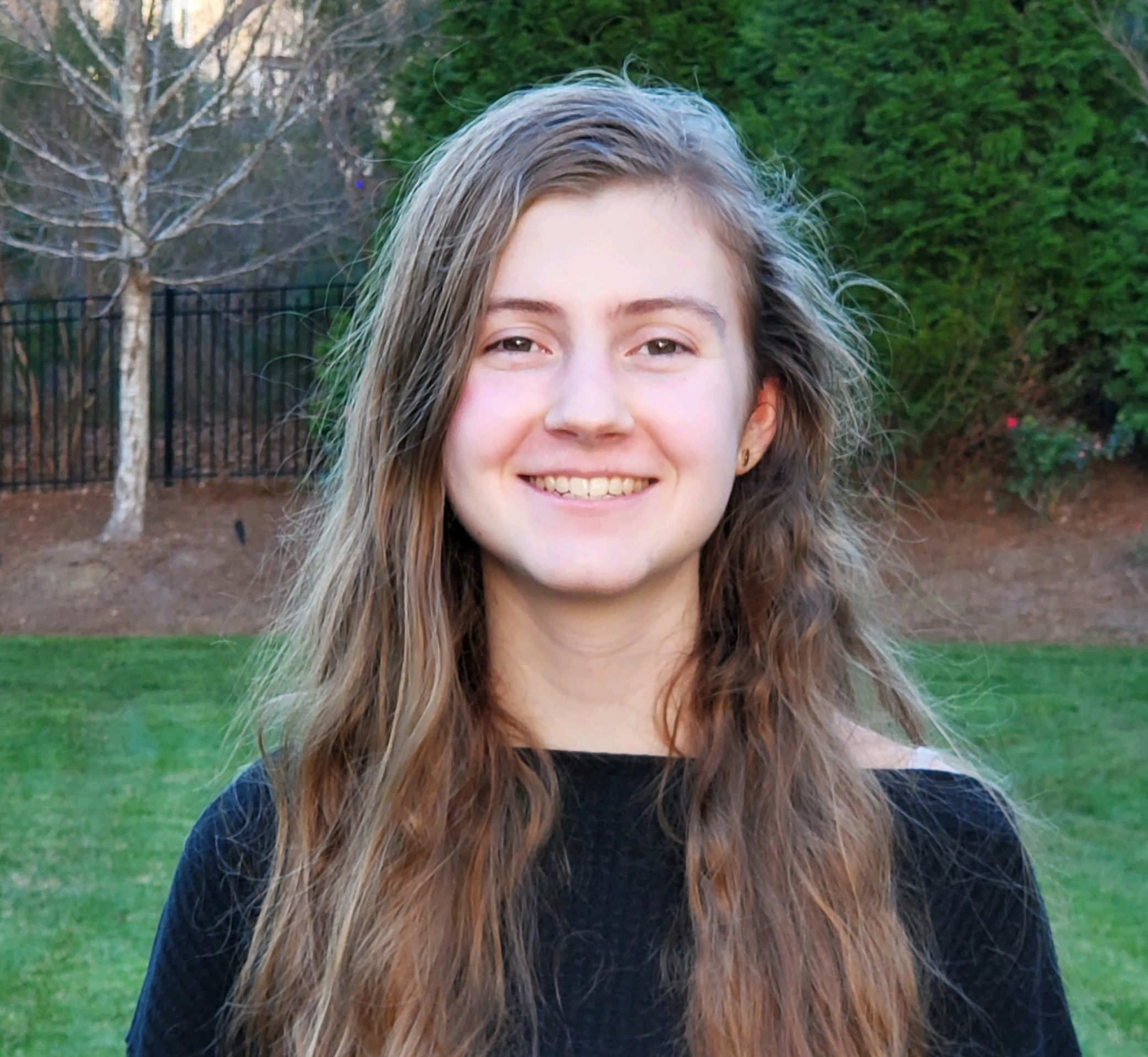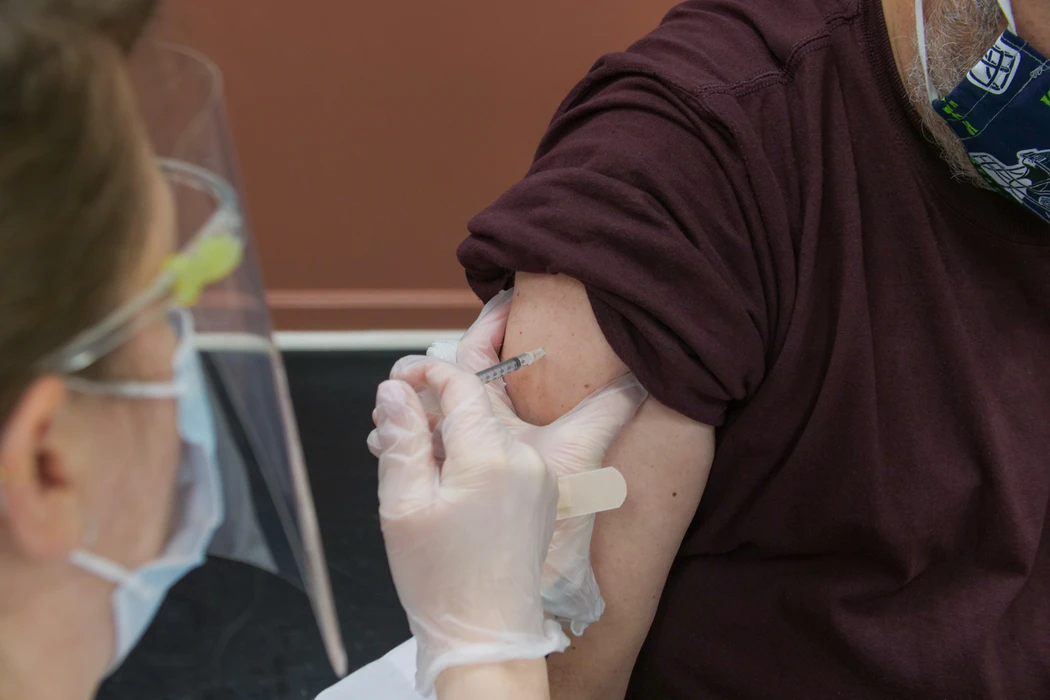A patient receives a Covid-19 vaccine shot. (Photo courtesy of Steven Cornfield on Unsplash)
For the past few months, anticipation for the Covid-19 vaccine grew for the majority of the population, particularly frontline workers and the elderly.
The U.S. began vaccinating health care workers and long-term care staff and residents in mid-December of 2020. Now they have progressed to vaccinating older adults, anyone 65 years and older.
How hard is it to schedule getting a vaccination? What is the experience like and are there any adverse reactions?
The following quotes are all from local older adults who already received the first shot of the vaccine.
Making An Appointment
The first step in the process is to make an appointment. There are numerous places and organizations that provide Covid-19 vaccinations.
Most local older adults who made appointments with vaccine providers found phone numbers to call by searching websites or through word of mouth. Many had success after calling a number friends (who already received the vaccine) shared with them.
“I received a message from a friend who had just received the vaccine at Duke Health in Durham. She sent the contact phone number for Duke Health,” wrote Jane Finley via email.
Bonnie Kress, another local senior, had similar progress with a friend’s suggestion.
“I received an email from Duke Health with a phone number to call to make an appointment. I called that number, and while I was on hold I had a text from a friend giving me another number to call. I called that second number, and got a voicemail offering me a call back. I did that, and 20 minutes later was called back and made an appointment… I was still on hold with the other number,” wrote Kress via email.
Overall, local seniors had mixed results when making appointments. For some of the respondents, it only took signing up online or a short phone call to set up an appointment.
“I feel getting on the website right away was very helpful. I was able to get the appointments [for her and her husband] in a matter of minutes,” wrote Chris Simson via email.
Judy Corey had a similarly easy experience. “I… called the number and within [an] hour and a half they called me back,” wrote Corey via email.
Others had a more difficult time finding available appointments online or reaching anyone by phone.
“It was frustrating because regardless of calling or signing up online, I was never sure I was on a list to be called. So I continued to check daily and suddenly… found… appointments. Within 5 minutes they were all gone,” wrote Sharen Welch via email.
Another senior Nancy Creasman wrote that it took her a total of 5 hours, on and off, to get an appointment by phone call.
Getting the Vaccine
Most of the people interviewed physically entered buildings and waited in lines or rooms for their inoculations. Once again, there were varied impressions of the vaccination process.
Generally, recipients followed these steps: answer questions about personal information, show identification, listen to explanations of side effects, then receive the vaccine.
For some, the process took a couple of hours, while for others, it took around an hour or less. Though general steps are consistent, the length of time varied based on location and the number of people receiving the vaccine.
None of the recipients reported any unexpected pain or discomfort from the injection.
Carol Kaelin got the vaccine at her doctor’s office. “The process… was very easy. I had to fill out a questionnaire and then the nurse gave me the shot. It didn’t hurt at all,” wrote Kaelin via email.
Welch — who went to The Friday Center at UNC — also had an easy experience. “The process was smooth and flowed quickly. There were several stations to go through, but there was no waiting and everyone explained what was going on. The shot was not bad,” she wrote.
Corey received the vaccine at a Duke Medicine building, separate from the hospital. “The process took about an hour and a half. They took my temperature first then looked me up on the computer for my time. They gave me a card and a number and [I] was told to wait in the hallway with all the other people… When they called my number I went to another person with a computer and she asked a lot of questions [about] where I live, age, and any health issues. They also took my license and insurance cards and they verified everything… I was escorted to a room with nurses… and [they] went over the side effects with me and said to call [the] doctor if I had any problems. Then [I] got the shot no problem,” wrote Corey.
Mary Norwood — who went to the Duke Raleigh Hospital for her vaccine — thought the process was difficult and lengthy. She felt the extended time was exacerbated by the crowd, many of whom were older people who needed wheelchairs or help to move.
“It took me 2 hours in all… It should have been administered by car and not by standing in long lines, then sitting, then another long line, etc.,” wrote Norwood via email.
Simson did experience drive-through vaccination at the Granville Health System in Oxford.
“The process was a very well organized drive-through. We needed to show a photo ID and insurance card. We received our injections at 9:02 am (never getting out of our car) and [were] on our way home at 9:17,” wrote Simson.
Of the 8 older adults interviewed, 6 received the Pfizer vaccine and 2 the Moderna.
After receiving the vaccine, nurses told recipients to wait 15 minutes for observation. If they showed no immediate adverse reaction they were free to leave after making an appointment for the second shot.
After the First Shot
None of the recipients experienced symptoms beyond that of a sore arm and tender injection site. Most thought it was similar to getting the flu shot.
“I have had no side effects from the vaccine. It was very much like getting a flu shot,” wrote Kaelin.
“My arm hurt for about 2 days (nothing serious), maybe a little more than the arm pain of a flu shot,” wrote Kress.
The Covid-19 vaccines from Pfizer and Moderna require 2 shots to work effectively. The next step is to receive the second dose, which is administered 3 to 4 weeks after the first, depending on the type of vaccine.
All the recipients made an appointment for the second shot after they received the first and before they left the building or drive-through.
Most recipients expressed relief to have finally received the vaccine and feel safer knowing that they have some protection against Covid-19.
“We [her and her husband] feel very blessed to have had our first injection and second one scheduled,” wrote Simson.
“I definitely feel a sense of relief knowing that in a short time, I will be 95% protected from the coronavirus,” wrote Kaelin.
However, even though the most vulnerable have been and are being vaccinated, we should not completely relax restrictions or stop being cautious. Until the country, and the world, achieves herd immunity, we will not be truly safe.
“It [the vaccine] doesn’t really change anything as far as I am concerned. I still wear a mask, wash my hands, stay 6 feet apart, and avoid large gatherings. Until we are [all] vaccinated and covid is under control, we all have to be cautious,” wrote Welch.

Hi! My name is Sydney and I am a staff writer for The Mycenaean. I am also a member of Key Club and Co-President of the Food Club Bank. I’m the last of six Kaelin family members to go through Leesville.

Leave a Reply